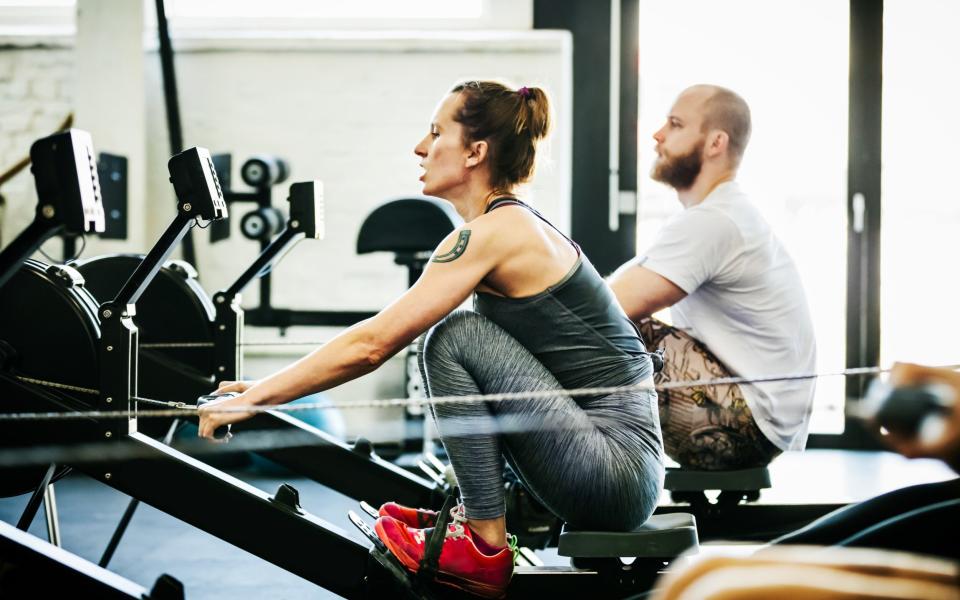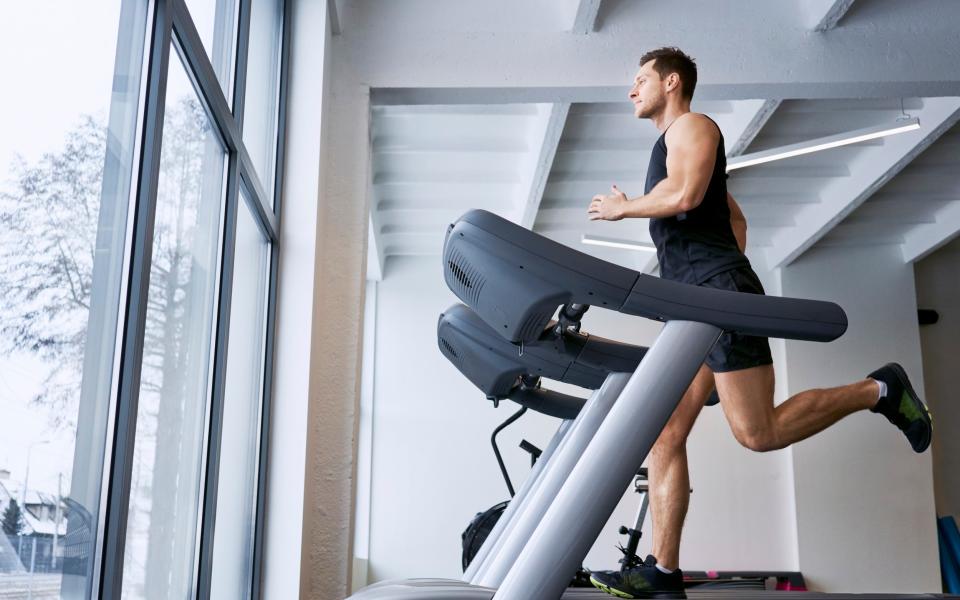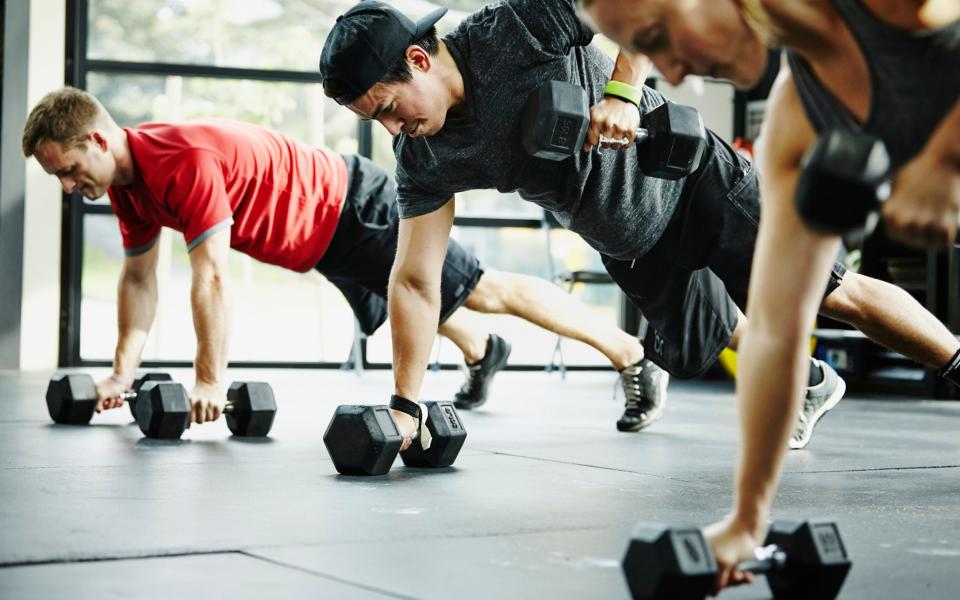Are you suffering from ‘midlife fitness drift’ like Rishi? Here’s how to get going again

Rishi Sunak’s days used to run to a set rhythm – typically courtesy of Britney Spears, whose songs guided his much-loved Peloton bike workouts.
Becoming PM, however, has somewhat disrupted his fitness regimen, Sunak confessed last weekend, finishing a 10k race with the admission that he hadn’t “done any exercise in a long time”.
While recording a none-too-shabby time of 47 minutes and 41 seconds, this is evidently not peak Sunak, but a sign of the “midlife drift” all too common among those who suddenly find the weight of work and home life derailing their once-religious workout routines.

Being “a little bit busy,” to put it à la Sunak, is “actually the one thing that most people coming in – male and female – say” when citing why their workouts have gone off-track, says trainer Matt Roberts. Becoming time-pressed as others’ reliance on you grows in midlife can curtail the exercise you used to champion.
Compounded by “a lack of purpose and desire to do [exercise],” it is often the first thing to be cut from midlifers’ schedules, causing fitness levels to drop; ditto muscle mass (which declines at a rate of 3-8 per cent each decade post 30) and weight gain.
Move for the menopause
“A lack of confidence due to unexpected weight gain can further deter [people] from implementing a routine, and it’s important to understand that movement will help you manage your anxiety and mood, and boost your confidence and serotonin levels,” says Kate Rowe-Ham, trainer and founder of the workout app Owning Your Menopause.
She says that she notices this among many of her female clients – and that gender can play a major part in our fitness needs as we age.

The menopause, for instance, can trigger “night sweats, exhaustion, muscle and joint aches, which can hinder progress and commitment,” with women “at an increased risk of developing osteoporosis” (where bones weaken) due to falling levels of oestrogen.
Rowe-Ham continues, “Building muscle mass and increasing your bone density is fundamental for women as we head through midlife, and this is why I would place more emphasis on the importance of weight training over HIIT [high-intensity interval training].”
Find your fitness ‘purpose’
Strength is just as important for men, Roberts adds, though it can be challenging without the drive they might have had for exercise in their 20s.
“As time goes by, you’ll lose or forget how that feels,” he says. “There’s a real need to be somewhat competitive” in order to ensure exercise doesn’t get bumped off your roster.

Roberts finds his fitness mojo in tennis, which “I like to play hard, whether it’s against friends or in little competitions – it gives me a real feeling of being in the zone.”
Testosterone levels also drop from the age of 30, at a rate of around one per cent each year, with weights and strength training providing the most effective means of retention.
Being stuck for get-up-and-go may feel like a rut you can’t escape, but “it is never too late to get back to it,” Rowe-Ham enthuses.
“If you train effectively and efficiently, you will be able to make time and commit to a sustainable programme, optimising your wellbeing and future-proofing your body.”
Five tips for kickstarting your motivation
Don’t be too ambitious. Roberts says this is a common issue for restarters, who have impractical expectations after a long fitness hiatus and then give up when they can’t get straight back to their former peak.
Set goals. With markers along the way that are challenging, yet not out of reach, the build-up “will feel great, and you will want to continue making progress,” according to Rowe-Ham.

Stop overthinking. Particularly with weights, which may be a new addition to your regimen; they needn’t be any more challenging than the rest of your routine. Rowe-Ham notes that “you can build lean muscle in four weeks by doing 15-20 minutes a day” – along with a rest day or two in between – so work it into your schedule just as you would another activity.
Make small changes. Even a five-minute desk break every hour is better than nothing, she advises; ditto a short walk, if something longer isn’t possible.
Don’t get down if your routine gets derailed. “If you miss what you had lined up because life got in the way, it’s OK. Don’t feel demotivated; see it as an opportunity to rest and get back to it the next day.”
Four-week plan
Week one
Three workouts a week prioritising strength are crucial for getting back to exercise, says Roberts.
Cardio
Mobilise the body first by stretching. Roberts suggests two to three minutes of cardio next: either skipping or rowing at a medium pace.
Strength
Pick a weight that you are going to be able to do 12-15 repetitions with, over four sets: “In week one, you’re not going to go for the heavy lifting,” Roberts says.

Do four sets of each exercise (for example deadlifts or bicep curls), with a rest of a minute in between each. Aim for six to eight exercises.
If it helps to keep your workouts organised, choose an individual muscle group or body part (ie glutes or legs, chest and back, etc) and focus each workout on that alone. Alternate these throughout the week. Spend five to six minutes on core training (planks, bicycle crunches, weighted ball twists) in every session.
And finally…
End with a quick cardiovascular finisher, Roberts advises: do an exercise like burpees or skipping for 35-40 seconds, three or four times, with a rest of two minutes in between each set.
Set the pace
Alongside your weekly workouts, aim for five 45-minute walks each week. This should be at a “five or six [out of 10] burn,” Roberts says, and can fit around your work routine.
Week two
As you progress, you want to be upping the intensity, says Roberts.
Cardio
Either increase the amount of time you are working – doubling from two minutes to four, for instance – or up your output; rowing at a fast pace, or running, rather than jogging, on the treadmill.
Strength
Lift heavier, aiming for fewer (12) reps over five to six sets. Start working out your areas of focus – you don’t necessarily need to be increasing the number of exercises you’re doing, just repeating those that will get you closer to your goal.
And finally…
Stick with the same timings, but push harder on the cardio finisher, ensuring you’re at 90 per cent of your limit. If you’re at the gym, use the rower to max out at the end of your session.
Week three
By this stage, your strength should be rebuilding nicely – and your routine should include a fourth session.
Cardio
Make one workout each week entirely cardio – even if it’s just 15 minutes on a bike, or jogging, at around 70 per cent intensity.

Strength
This is also the week to include one high-level strength-only session, shooting for between three and five heavy reps per set, focusing on large muscle groups. Include squats, deadlifts, chest presses and seated rows. Continue with your other strength sessions, too.
Week four
By the end of the fourth week, continue raising the intensity of your sessions, and whittling down what exercises work (and which you’re better off avoiding) depending on the results you’re after.
Cardio
Take the intensity of the cardio-only session up by 10 per cent, and increase the duration by five minutes. Use the “finisher” principle at the end, with 30-45 second sprint intervals for the final few minutes of your jog.
Strength
Up your load, both in your strength-only session and the weights portion of your regular workouts. The more resistance you feel, the more muscle you’ll build – and fat you’ll burn.
“Within about a month or six weeks, you can make some really significant changes,” Roberts says, including a rise of 15-20 per cent in testosterone levels (for men).
While early success is a good motivator, this “should be seen as being a three-to-six-month project to make someone become a really big, really boosted version of themselves.”
By the six month mark, he adds, “you can actually transform someone into a wholly different person in all aspects – in their fitness, in their shape and in their health.”

 Yahoo News
Yahoo News 
